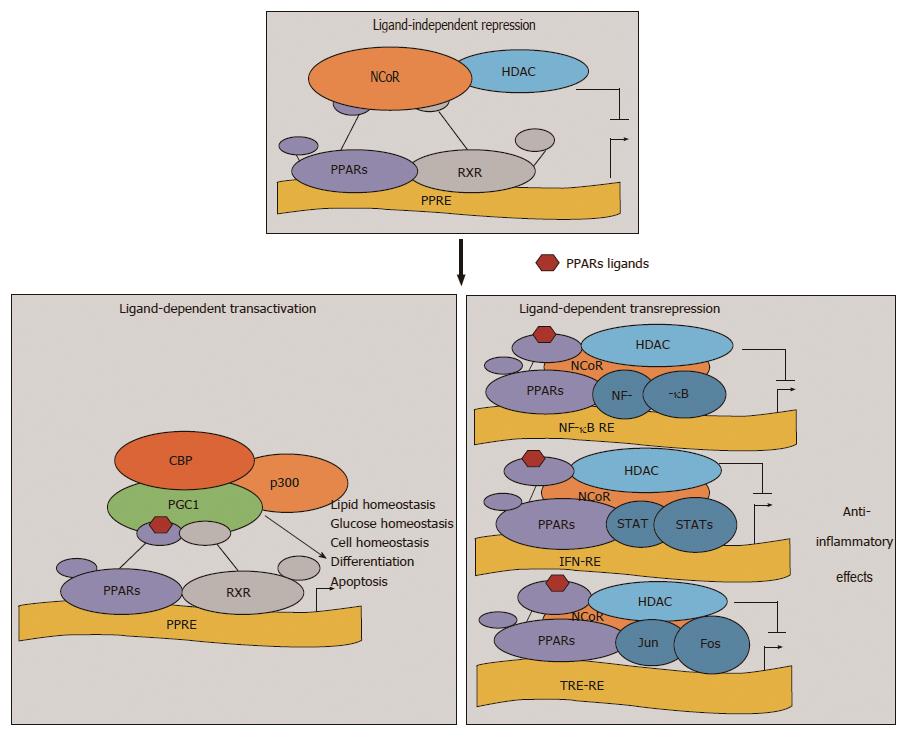Copyright
©The Author(s) 2015.
World J Gastrointest Pharmacol Ther. Nov 6, 2015; 6(4): 120-126
Published online Nov 6, 2015. doi: 10.4292/wjgpt.v6.i4.120
Published online Nov 6, 2015. doi: 10.4292/wjgpt.v6.i4.120
Figure 1 Peroxisome proliferator-activated receptors - mediated mechanisms of transcriptional regulation.
In the absence of ligands, peroxisome proliferator-activated receptors (PPARs) bind the promoters of their target genes and repress transcription by recruiting the corepressor complex. In the presence of ligands, PPARs can induce either ligand-dependent transactivation or transrepression. Transactivation involves PPARs heterodimerization with the retinoid X receptors (RXRs) followed by recognition of specific PPAR response elements (PPREs) and interaction with coactivators. Transrepression involves interference with other signal transduction pathways, including NF-κB, STAT, and AP1. NCoR: Nuclear receptor corepressor; NF-κB-RE: NF-κB response element; IFN-RE: Interferon-stimulated gene factor responsive element; TRE-RE: O-tetradecanoylphorbol 13-acetate-responsive element; HDAC: Histone deacetylase; CBP: CREB binding protein; PGC1:Peroxisome proliferator activated receptor gamma coactivator 1; STATs: Signal transducers and activators of transcription.
- Citation: Saha L. Role of peroxisome proliferator-activated receptors alpha and gamma in gastric ulcer: An overview of experimental evidences. World J Gastrointest Pharmacol Ther 2015; 6(4): 120-126
- URL: https://www.wjgnet.com/2150-5349/full/v6/i4/120.htm
- DOI: https://dx.doi.org/10.4292/wjgpt.v6.i4.120









